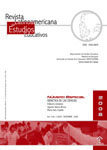Authors
Abstract
This work provides information on the way multi-modal explanations are constructed in school science. The article is especially interested in the specific contributions of three semiotic mediums (oral, graphic, 3d model) to the construction of the theoretical model on “sense organs and nervous system”. By means of a qualitative methodology and discourse analysis, the multimodal explanations generated in two didactic sequences, one aimed at pre-scholar children and the other at 4th and 5th grade students, were analyzed. The results showed that different semiotic mediums have a specific contribution in the construction of the model; complementary,they enrich the children’s explanations. Additionally, the teachers support the students’ performance and the social negotiation of representation, generating regulation processes.
References
Danish, J. & Enyedy, N. (2006). “Negotiated representational mediators: How young children decide what to include in their science representations”. Science Education, 91(1):1-35.
Edwards, D. y Mercer, N. (1998). El conocimiento compartido: El desarrollo de la comprensión en el aula. Barcelona: Paidós-MEC.
Ferk, V., Vrtacnik, M., Blejec, A. & Gril, A. (2003). “Students’ Understanding of Molecular Structure Representations”. International Journal of Science Education, 25(10): 1227-1245.
García, P. (2005). “Los modelos como organizadores del currículo en biología”. Enseñanza de las Ciencias, Número extra: 1-5.
Gómez, A. (2005). La construcción de un modelo de ser vivo en la escuela primaria: Unas visión escalar. Tesis Doctoral. Universitat Autònoma de Barcelona, Bellaterra.
________. (2008) Analysis of the use of drawings and scale models in the construction of multi-modal explanations by primary students when studying the sense of sight. ERIDOB Congress.
Gómez, A., Sanmartí, N. y Pujol, R. (2007). “Fundamentación teórica y diseño de una unidad didáctica para construir el modelo de ser vivo en la escuela primaria”. Enseñanza de las Ciencias, 25(3): 325-340.
Izquierdo, M. y Adúriz-Bravo, A. (2003). “Epistemological foundations of school science”. Science & Education, 12(1): 27-43.
Jewitt, C., Kress, G., Ogborn J y Tsatsarelis C. (2001). “Exploring Learning Through Visual, Actional And Linguistic Communication: The Multimodal Environment of A Science Classroom”. Educational Review 53, (1): 5-18.
Kress, G., Jewitt, C., Ogborn, J. y Tsatsarelis, C. (2001). Multimodal teaching and learning. The rhetorics of the science classroom. London: Continuum.
Márquez, C. (2002). La comunicació multimodal en l’ensenyament del cicle de l’aigua. Tesis Doctoral. Doctorado en Didáctica de las Ciencias Experimentales y las Matemáticas. UAB, España.
Marquez, C., Izquierdo, M. y Espinet, M. (2003). “Comunicación multimodal en las clases de ciencias: el ciclo del agua”. Enseñanza de las Ciencias, 21(3): 371-386.
Norris, S. et al. (2005). “A theoretical framework for narrative explanation in science”. Sci. Ed., 89: 535-563.
NSF. (2001). Molecular visualization in science education. N. S. Foundation. Arlington, VA, NSF: 1-29.
Ogborn, J., Gunther, K., Martins, M., NcGillicuddy, K. et al. (2007). Explaining science in the classroom. UK: Browns Book.

 PDF (Español)
PDF (Español)
 FLIP
FLIP



















